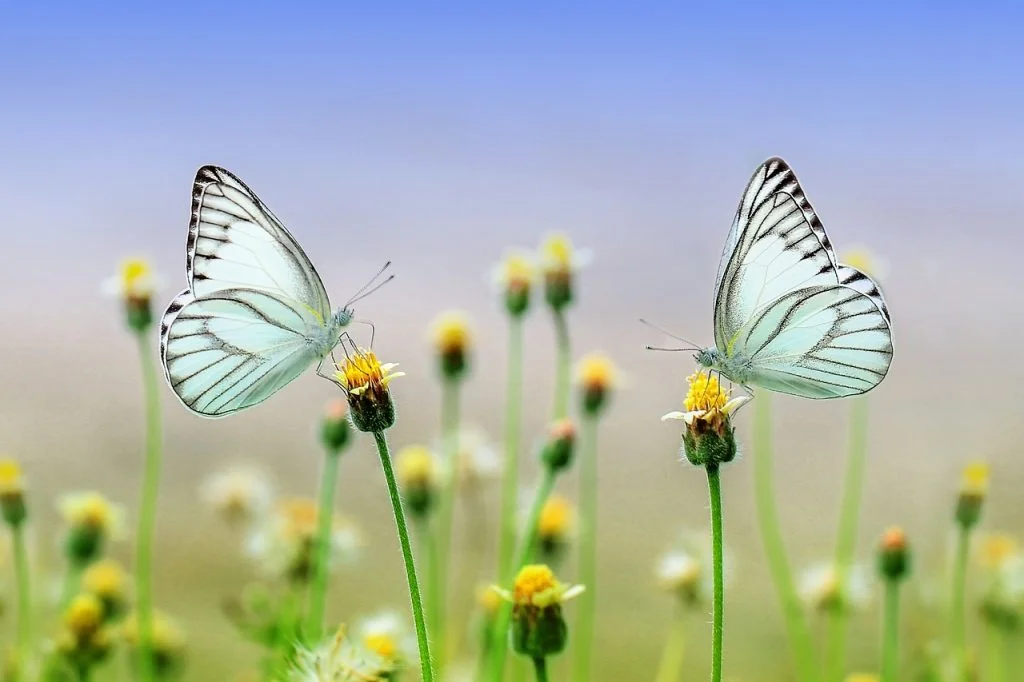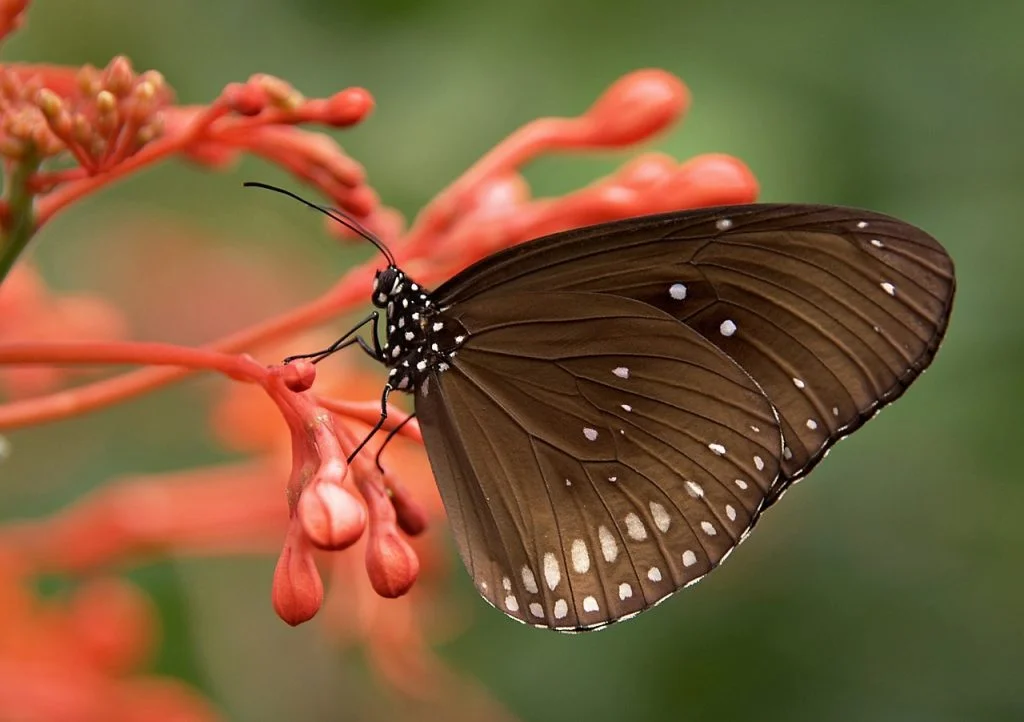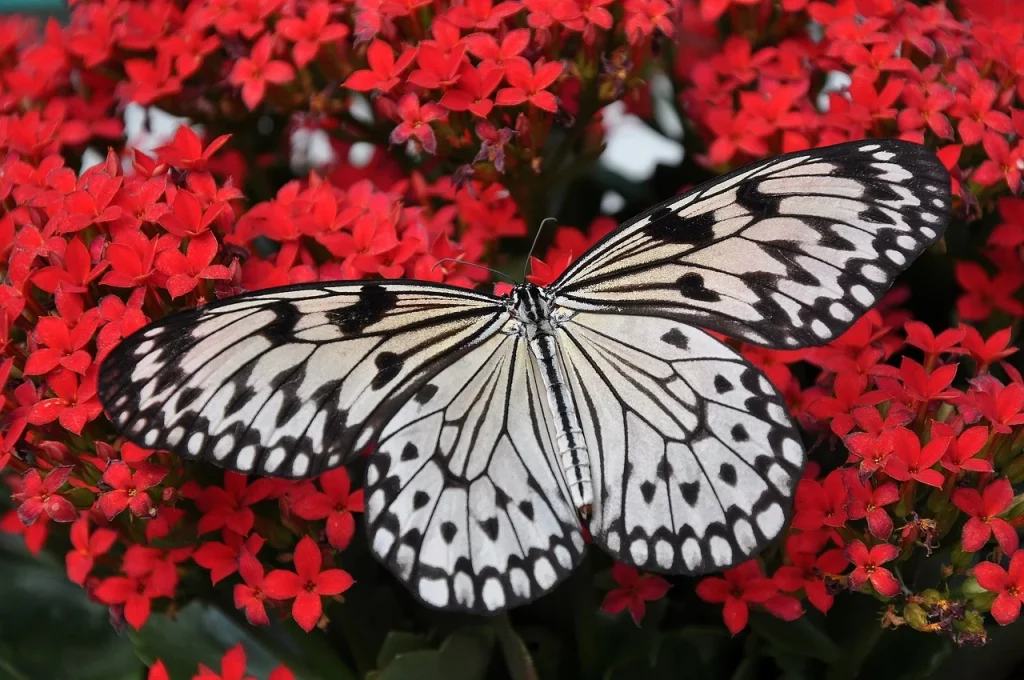Welcome to the whimsical world of butterflies, where flapping wings cause hurricanes on the other side of the world. Well, that might be a slight exaggeration, but who’s keeping track? Butterflies, those colorful, fluttery show-offs of the insect kingdom, are more than just winged eye candy.
Did you know that some butterflies taste with their feet? Imagine if you had that talent at your next dinner party! But before we dive into the kaleidoscope of facts, let me ask you: have you ever tried to outstare a butterfly? Spoiler alert: They have more eyes than you do!
We delight in the beauty of the butterfly, but rarely admit the changes it has gone through to achieve that beauty.
Maya Angelou
Butterfly Facts
Welcome to our world of wonder, where we explore fun facts about butterflies! These delicate creatures have more to offer than just beauty. Stay tuned till the end for a quiz that will challenge your butterfly knowledge.
- Butterflies belong to the order Lepidoptera, which also includes moths.
- Their life cycle consists of four stages: egg, larva (caterpillar), pupa (chrysalis), and adult.
- Butterflies taste with their feet.
- They can only feed on liquids, usually nectar.
- Their wings are covered with thousands of tiny scales.
- Monarch butterflies migrate long distances, up to 3,000 miles.
- Butterflies see a range of colors, including ultraviolet.
- Most species are diurnal, active during the day.
- The smallest butterfly in the world is the Western Pygmy Blue.
- The largest species is the Queen Alexandra’s Birdwing.
- Some butterflies camouflage themselves to look like leaves.
- Their antennae are used for balance and smelling.
- Butterflies can’t hear, but they can feel vibrations.

- Their coloration can be used for mating, camouflage, and warning predators.
- A group of butterflies is called a flutter.
- Caterpillars have special structures called mandibles for chewing leaves.
- Many butterflies exhibit mimicry for survival.
- Metamorphosis is a significant change in their life cycle.
- Butterflies have compound eyes made up of many small lenses.
- Their blood is called hemolymph.
- Proboscis is the feeding tube they use to drink nectar.
- Butterflies cannot fly if their body temperature is below 86 degrees Fahrenheit.
- The Viceroy butterfly mimics the Monarch to avoid predators.
- Butterflies sleep under leaves or in crevices.
- Their lifespan varies from a few days to several months.
- Migration patterns can be very complex.
- Some species are nocturnal.
- Their wing patterns are unique to each species.

- The chrysalis stage can last from a few weeks to months.
- Eggs are laid on specific host plants.
- Adult butterflies contribute to pollination.
- Butterflies have jointed legs.
- Scale patterns on their wings can be highly intricate.
- The brush-footed butterfly family is the largest.
- Some caterpillars are considered pests in agriculture.
- Courtship behavior in butterflies can be elaborated on.
- Ocelli are eye-like markings on their wings.
- Many species have territorial behavior.

- The Alpine Black Swallowtail can live at high altitudes.
- Climate change impacts their migration and distribution.
- Butterflies use sunbathing to warm up their bodies.
- They have a variety of predators, including birds and spiders.
- The Heliconius butterflies are known for their long lifespans.
- Butterflies cannot swim, but they can float on water.
- Their vision helps them navigate and find food.
- Conservation efforts are vital for many threatened species.
- Some species have antifreeze-like substances in their bodies to survive the cold.
- Mimicry can be both Batesian (harmless species mimic harmful ones) and Müllerian (two harmful species mimic each other).
- Butterflies play an important ecological role in their ecosystems.
- The Blue Morpho’s wings are not actually blue; the color is due to the way light reflects off microscopic scales.
Butterfly Myths

Having explored all these cool facts about butterflies, it’s time to unravel the myths and discover the truths hidden beneath their colorful wings.
- Butterflies Have a Short Lifespan
While some butterflies do have a short lifespan of only a few weeks, others, like the monarch butterfly, can live up to 9 months. This longer lifespan is often utilized for long migrations. - Butterflies Can’t Fly If They Get Wet
Butterflies can fly after getting wet, but they prefer not to. They usually seek shelter during rain and need to dry their wings before flying efficiently again. - All Butterflies Are Colorful
While many butterflies are known for their vibrant colors, some species are quite dull or even colorless. This is often a camouflage tactic or a result of living in less sunlight-intensive habitats. - Butterflies Can’t Hear
Butterflies don’t have ears like humans, but they can sense vibrations. This helps them to be alert to potential dangers or to locate mates. - Butterflies Only Feed on Flower Nectar
Nectar is a primary food source, but many butterflies also feed on pollen, tree sap, rotting fruit, and even animal dung and carrion. Their diet can be surprisingly varied!
No products found.
Butterfly Quotes

After busting some myths, it’s time for some colorful quotes. Let me know which one is your favorite in the comments, or you can also share some so I can add them to the list.
Butterflies are nature’s angels reminding us what a gift it is to be alive.
Robyn Nola
This quote by Robyn Nola reflects on the symbolic beauty and spiritual significance of butterflies, highlighting their role as reminders of life’s preciousness.
The butterfly counts not months but moments, and has time enough.
Rabindranath Tagore
Rabindranath Tagore’s words here emphasize the butterfly’s embodiment of living in the moment, suggesting a lesson in appreciating the present rather than being consumed by the passage of time.
Butterflies… flowers that fly and all but sing.
Robert Frost
In this poetic expression, Robert Frost likens butterflies to flying flowers, beautifully merging the realms of flora and fauna with a lyrical touch.
Just when the caterpillar thought the world was over, it became a butterfly.
Barbara Haines Howett
Barbara Haines Howett uses the metamorphosis of a butterfly as a metaphor for hope and rebirth, suggesting that endings can lead to beautiful new beginnings.
Happiness is like a butterfly; the more you chase it, the more it will elude you.
Henry David Thoreau
Henry David Thoreau’s quote compares the pursuit of happiness to chasing a butterfly, implying that happiness is better appreciated when not pursued directly.
Butterfly FAQ

We’ve explored butterfly quotes, and now it’s time for some FAQs. Absorb these answers with the curiosity of a caterpillar, because soon, in the quiz section, you’ll spread your wings! (hopefully)
- Can the wings of a butterfly heal?
Once their wings are damaged, they cannot heal. These creatures are marvels of nature, but their wings lack the regenerative abilities that some other animals possess. - What butterfly looks like a monarch?
Nature loves to play dress-up, and in the case of the Viceroy butterfly, it’s all about mimicking the Monarch. These clever imposters share the same warm, vibrant orange and black pattern as Monarchs, a fantastic example of nature’s mimicry. This resemblance helps the Viceroy avoid predators, who mistake it for the less palatable Monarch. - Can butterflies see their wings?
Imagine if you could see the world in a kaleidoscope of colors, including ultraviolet! However, despite their remarkable vision, butterflies can’t fully see their own wings. They rely on instinct and the feel of their wings to understand their condition and capabilities. - What butterfly symbolizes death?
In many cultures, the Black Witch Moth, often mistaken for a butterfly due to its size and beauty, is associated with death and misfortune. This belief varies across cultures, with some viewing its appearance as a harbinger of death, while others see it as a symbol of transformation and a spirit visiting from the beyond. - What do butterflies eat?
They primarily feed on nectar from flowers, using their long, straw-like proboscis to drink. This diet makes them vital pollinators. Some species also enjoy a sip of fruit juices, and there are even a few that indulge in more peculiar tastes like mud or tears for their mineral content!
No products found.
Butterfly Quiz

Welcome to the butterfly quiz! If you don’t get any questions right, be prepared for a surprise transformation into a caterpillar!
Butterfly Merch
If you are a true butterfly fan, then you definitely need to check out our merchandise. You can find T-shirts, hoodies, mugs, and tote bags for your favorite designs. Feel free to check out all the other designs in our shop.
Conclusion
As we close this journey through the enchanting world of butterflies, let’s pause to reflect on their delicate beauty and the vital role they play in our ecosystems. These winged wonders are not just a feast for the eyes; they’re crucial pollinators, contributing to the health of our planet.
Their transformation from caterpillar to butterfly serves as a symbol of change and resilience, inspiring us in our daily lives. What lessons can we learn from the butterfly’s journey that apply to our own lives?
3 Sources Used For This ArticleAll About Butterflies – Uky
Ultimate Guide to Caterpillar Metamorphosis – Medium


